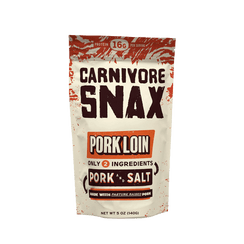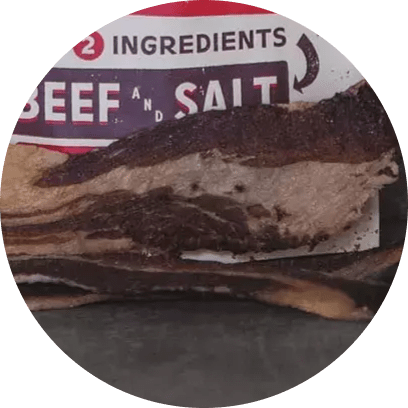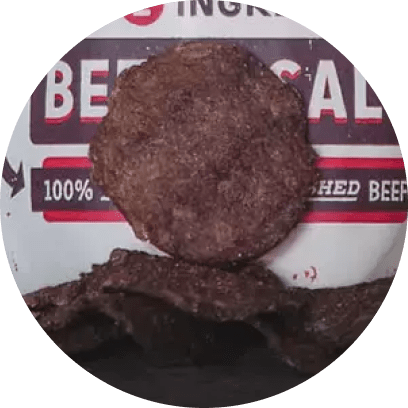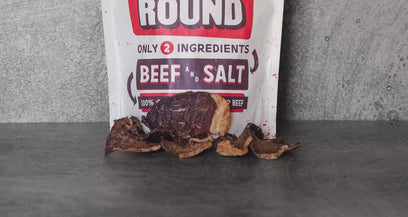THE CARNIVORE DIET BENEFITS




In a world with finite resources, regenerative agriculture has emerged as a powerful solution to help restore our lands and reshape the future of farming.
But what exactly do regenerative farmers do differently that makes this method so much better than the commercial agriculture techniques we see in practice today?
You’re about to find out.
In this article, we’ll cover ALL the regenerative farming techniques you’d witness on these types of farms. As you embark on this journey with us, you'll discover how regenerative farming goes beyond traditional sustainable agriculture, creating a vibrant, life-enhancing ecosystem that nurtures the land, the farmer, and the consumer alike.
From no-till farming to agroforestry, and from holistic planned grazing to wetland restoration, this guide will take you on an educational adventure, revealing the diverse array of techniques that farmers around the world are adopting to regenerate their lands and produce healthier, more nutritious food.
Better yet, we’ll empower you with advice on how you can do your part to support these regenerative agriculture practice yourself. This is important for transforming our heavily commercialized food supply chain. But for now, let’s get right into what you came here for - to discover the various regenerative farming methods.
Regenerative Farming Techniques: Methods for More Resilient, Sustainable Agriculture
You’ll see an array of techniques used on any given farm that implements regenerative agriculture practices. While not every farm implements every single one of these techniques, they each have their place in the overall world of regenerative agriculture.
We’ll kick this conversation into gear with the most common regenerative farming method: no-till or reduced tillage.
Implementing No-Till or Reduced Tillage
No-till farming is a regenerative technique that preserves soil structure by reducing or eliminating plowing and tilling. This approach keeps the soil's organic matter intact, enhances soil fertility, and reduces erosion.
Sometimes, farmers will take this technique a step further and use specialized equipment when they do till in an effort to maximize the benefits reduced tillage has to offer. Traditional equipment creates more disturbance than would be ideal.
By minimizing soil disturbance, no-till farming allows for greater water infiltration and retention, reducing the need for irrigation. Water is one of our most precious resources, and increasing the efficiency of how it's used is a huge benefit of this regenerative farming technique.
Reducing or eliminating tillage also decreases the release of carbon dioxide into the atmosphere and helps in carbon sequestration. We talk about this more in our article on how regenerative agriculture sequesters carbon.
To top it all off, reduced tillage benefits the farmer by lowering labor and fuel costs while enhancing the overall productivity of the land. Everyone wins!
Planting Cover Crops
Cover crops are a unique type of plant that is grown not for the purpose of being harvested itself - but to improve the health and resiliency of the cash crop. They suppress weeds, prevent erosion, improve soil fertility, and promote biodiversity.
These crops also contribute to carbon sequestration themselves, while breaking pest and disease cycles. As a result, farmers can reduce their reliance on synthetic fertilizers and pesticides, saving money and supporting a healthier ecosystem. You benefit, too, as the end consumer. Your food isn’t being tainted by chemical inputs that would otherwise be used.
One example of this regenerative agriculture practice at play can be found in the cornfields of the Midwest. Farmers often plant winter rye or hairy vetch between their cash crops to prevent soil erosion and improve soil health.
Or, in France, grape growers utilize clover and mustard between vineyard rows to enhance biodiversity and suppress weeds. These are just a few examples of this regenerative farming method in action.
Rotating Crops Regularly
Beyond planting cover crops, regenerative farmers will also rotate crops regularly. This is known as crop rotation - and is the practice of changing the types of crops grown in a field from one season or year to the next.
This technique enhances soil fertility, breaks disease & pest cycles, and promotes biodiversity - all of which are common themes you’ll start to pick up on with these regenerative farming techniques.
Through this regenerative farming technique, farmers can also reduce the need for synthetic fertilizers and pesticides, improving their bottom line and promoting healthier ecosystems for both the farmer and the consumer.
Practicing Agroforestry
In looking at the history of regenerative agriculture, agroforestry is one of the earliest techniques used that is still employed today.
This practice involves integrating trees and shrubs into crop and livestock systems. This practice enhances biodiversity, boosts soil fertility, and provides a habitat for beneficial insects & wildlife. By incorporating trees into the landscape, farmers can also sequester carbon, mitigate climate change, and diversify their income sources through timber and non-timber products.
Holistic Planned Grazing
Holistic planned grazing is a regenerative livestock management strategy that mimics the natural movement of wild herds. This approach prevents overgrazing, improves soil health, and promotes biodiversity.
By carefully managing the timing and intensity of grazing, farmers can increase forage productivity, reduce the need for supplemental feed, and enhance the overall health and well-being of their livestock.
Plus, this creates a more enjoyable, natural life for the livestock itself - and is considered the most ethical approach to livestock management.
Mulching, Composting, & Using Organic Amendments
These practices involve adding organic materials to the soil to improve its fertility and structure. The end result of all of these is that fewer - if any - synthetic inputs are needed to fertilize crops.
Mulching conserves moisture, suppresses weeds, and regulates soil temperature. Composting recycles organic waste into nutrient-rich humus, reducing the need for synthetic fertilizers. Organic amendments like manure, compost, and biochar improve soil health, enhance nutrient availability, and boost microbial activity, resulting in more robust and resilient crops.
All of this contributes to a more favorable outcome for the planet, our farmers, and ourselves - which is why you’ll see these regenerative agriculture practices implemented across all regenerative farms.
Integrated Pest Management (IPM)
Integrated pest management - referred to as IPM - is a holistic approach to managing pests that focuses on prevention, monitoring, and targeted interventions.
By fostering a diverse ecosystem, encouraging beneficial insects, and using targeted biological controls, IPM reduces the reliance on chemical pesticides. This approach promotes a healthier environment, safeguards pollinators, and reduces the risk of pesticide resistance in pests.
More specifically, this creates a safer working environment on the farm where harmful toxins aren’t exposed to workers. And, the end user doesn’t have to stress about what went into the food they put in their bodies.
Contour Farming
Contour farming involves planting crops along the natural contours of the land to reduce soil erosion and runoff. This technique increases water infiltration and retention, improving soil moisture and reducing the need for irrigation.
This regenerative agriculture practice benefits both the farmer and the environment by conserving water resources. Not only does this reduce sediment pollution in water - it helps farmers enjoy higher profit margins with lower water costs.
Wetland Restoration
Wetland restoration involves reestablishing the natural structure and function of wetland ecosystems that have been degraded or lost due to human activities.
Regenerative farmers invest in wetland restoration because it can improve water quality, reduce flood risks, and enhance habitats for a variety of species. Wetland restoration projects may include rebuilding the natural topography, reintroducing native plants, and managing water flow to support wetland hydrology.
Using Riparian Buffers
Riparian buffers are strips of vegetation planted along waterways to protect them from the impacts of adjacent land use, such as agricultural runoff.
These vegetative barriers empower farmers by improving water quality, reducing erosion, and supporting more diverse ecosystems. But that’s not all. Riparian buffers also act as natural filters, helping to remove pollutants and sediments from runoff before they reach the waterways. A few examples of riparian buffer plantings include trees, shrubs, and grasses, which together create a thriving habitat for various wildlife species.
Terracing
Terracing is the practice of creating leveled areas on slopes to reduce soil erosion and improve water retention. This method involves building a series of stepped, flat platforms along the contour lines of a hillside, which help to slow down water runoff and promote infiltration.
Terracing is particularly useful in regions with steep slopes and heavy rainfall, where soil erosion can be a significant concern. Putting these platforms in place allows farmers to be more efficient with water and soil resources while supporting more sustainable agricultural practices on sloping lands.
Pollinator Habitation Creation
Creating pollinator habitats is at the forefront of all regenerative farming techniques - as these insects are key to keeping our world thriving. Pollinators play a crucial role in agriculture as they are responsible for pollinating crops and ensuring a healthy food supply.
This practice involves planting diverse native plants that attract and support pollinators like bees, butterflies, and birds. By providing habitats for pollinators, regenerative farmers can enhance biodiversity, improve crop yields, and support ecosystems that rely on these essential species. Examples of pollinator-friendly plants include wildflowers, flowering shrubs, and fruit-bearing trees.
Keyline Plowing
Many regenerative agriculture practices achieve a common goal: improving soil health. This is yet another. Keyline plowing is a soil cultivation technique that focuses on contouring the land to optimize water distribution and reduce erosion.
By following the natural contours of the landscape, keyline plowing helps to capture and retain rainfall, rehydrate the soil, and prevent water runoff. This method not only improves soil health and water efficiency but also aids in carbon sequestration and the overall resilience of the agricultural system.
How Can You Advocate For These Regenerative Farming Methods to Become the “Norm”?
These are the most common regenerative farming techniques you’ll witness today. All of these contribute to the overarching goals of regenerative agriculture: healthier lands, healthier food, and healthier individuals throughout the food supply chain.
The question now is how to support regenerative agriculture yourself. After all, we’ve got a tough hill to climb if we’re going to make this the “norm”. Big ag’s profits are on the line - and the techniques used in commercial farming are more cost-effective. So, how do we make lasting change?
It Starts With Education & Advocacy
The more you know about regenerative farming, the easier it will be for you to educate others around you and advocate for these changes. So - we encourage you to read some of our helpful resources on this approach to farming:
- What is regenerative agriculture?
- How does regenerative agriculture work?
- Does regenerative agriculture really work?
- Why is regenerative agriculture important?
Once you feel confident, it’s time to make your voice heard. Use your vote wisely. Contact your local representatives and urge for policy changes. Sign initiatives that abolish harmful commercial agriculture tactics and support more sustainable, ethical regenerative farming methods.
Shop Smart With Regenerative Farmers
Beyond being an advocate, you can do your part to create a world reliant on regenerative-farmed food by shopping smart. Identify local farmers that implement these types of practices and buy from them directly. This will hit big ag where it hurts them the most while allowing you to keep your money local.
Or, you can take this a step further and learn how to do regenerative agriculture yourself. Starting a small backyard garden or raising your own chickens is a great starting point - and something that will fill you with a renewed sense of purpose along the way.
For the foods and snacks that you can’t find locally or grow/raise yourself, shop wisely online with brands that source their ingredients through regenerative farms. Carnivore Snax is a great example of this - as our carnivore crisps feature just 2 ingredients: meat and salt. All our products are sourced from the most elite, ethical regenerative farms in the nation.
Not only are you getting the best low carb snack, but you’re also supporting a movement that will leave a lasting impact on our world. What more could you ask for? Check out our full range of cuts today - which include:
Bringing Our Conversation on Regenerative Agriculture Practices to a Close
At this point, it’s time to bring our conversation on regenerative agriculture techniques to a close. There are so many different regenerative agriculture practices in play on these farms at any given time - and they all work together in synergy to achieve common goals.
So, knowing all about regenerative farming methods - and their implications - what are you waiting for? Continue your education on this topic and become an advocate. In the meantime, grab some meat chips at Carnivore Snax today.























